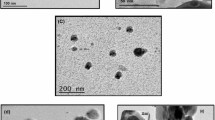Abstract
We report observation of high quantum yield, long-lifetime fluorescence from a red dye BO-PRO-3 excited by resonance energy transfer (RET). The acceptor fluorescence was highly enhanced upon binding to the donor-labeled DNA. A ruthenium complex (Ru) was chosen as a donor in this system because of its long fluorescence lifetime. Both donor and acceptor were non-covalently bound to DNA. Emission from the donor-acceptor system (DA) at wavelengths exceeding 600 nm still preserves the long-lifetime component of the Ru donor, retaining average fluorescence lifetimes in the range of 30–50 ns. Despite the low quantum yield of the Ru donor in the absence of acceptor, its overall quantum yield of the DA pair was increased by energy transfer to the higher quantum yield acceptor BO-PRO-3. The wavelength-integrated intensity of donor and acceptor bound to DNA was many-fold greater than the intensity of the donor and acceptor separately bound to DNA. The origin of this effect is due to an efficient energy transfer from the donor, competing with non-radiative depopulation of the donor excited state. The distinctive features of DA complexes can be used in the development of a new class of engineered luminophores that display both long lifetime and long-wavelength emission. Similar DA complexes can be applied as proximity indicators, exhibiting strong fluorescence of adjacently located donors and acceptors over the relatively weak fluorescence of separated donors and acceptors.
Similar content being viewed by others
REFERENCES
R. B. Thompson (1994) In J. R. Lakowicz (Ed.) Topics in Fluorescence Spectroscopy, Vol. 4: Probe Design and Chemical Sensing, Plenum Press, New York, pp. 151–222.
S. Daehne, U. Resch-Genger, O. S. and Wolfbeis (1998) Near-Infrared Dyes for High Technology Applications, Kluwer Academic Publishers, Boston, pp. 458.
S. J. Strickler and R. A. Berg (1962) J. Chem. Phys. 37, 814–822.
J. R. Lakowicz, G. Piszczek, and J. S. Kang (2001) Anal. Biochem. 288, 62–75.
B. P. Maliwal, Z. Gryczynski, and J. R. Lakowicz (2001) Anal. Chem. 73, 4277–4285.
K. Kalayanasundarm (1992) Photochemistry of Polypyridine and Porphyrin Complexes, Academic Press, New York.
A. Juris, V. Balzani, F. Barigelletti, S. Campagna, P. Belser, and A. Von Zelewsky (1988) Coord. Chem. Rev. 84, 85–277.
J. N. Demas and B. A. DeGraff (1991) Anal. Chem. 63, 829A–837A.
J. N. Demas and B. A. DeGraff (1994) in J. R. Lakowicz (Ed.) Topics in Fluorescence Spectroscopy, Vol. 4: Probe Design and Chemical Sensing, Plenum Press, New York, pp. 71–107.
E. Terpetschnig, H. Szmacinski, H. Malak, and J. R. Lakowicz (1995) Biophys. J. 68, 342–350.
H. Szmacinski, E. Terpetschnig, and J. R. Lakowicz (1996) Biophys. Chem. 62, 109–120.
R. Grigg and W. D. J. A. Norbert (1992) J. Chem. Soc. Chem. Commun. 1992, 1300–1302.
M. E. Lippitsch and O. S. Wolfbeis (1988) Anal. Chim. 205, 1–6.
G. R. Haugen, B. W. Wallin, and F. E. Lytle (1979) Rev. Sci. Instrum. 50, 64–72.
B. G. Barisas and M. D. Lauther (1980) Rev. Sci. Instrum. 51, 74–78.
D. R. James, A. Siemiarczuk, and W. R. Ware (1992) Rev. Sci. Instrum. 63, 1710–1716.
H. C. Cheung (1991) in J. R. Lakowicz (Ed.) Topics in Fluorescence Spectroscopy, Vol. 2 Principles, Plenum Press, New York, pp. 127–176.
R. M. Clegg (1992) Proc. Natl. Acad. Sci. 211, 353–388.
P. R. Selvin (1996) IEEE J. Selected Topics in Quantum Electronics 2(4), 1077–1087.
J. Ju, C. Ruan, C. W. Fuller, A. N. Glazer, and R. A. Mathies (1995) Proc. Natl. Acad. Sci. USA 92, 4347–4351.
S. L. Klakamp and W. DeW. Horrocks (1992) J. Inorg. Biochem. 46, 175–192.
S. L. Klakamp and W. DeW. Horrocks (1992) J. Inorg. Biochem. 46, 193–205.
P. K. L. Fu and C. Turro (1999) J. Am. Chem. Soc. 121(1), 1–7.
L. Stryer (1978) Annu. Rev. Biochem. 47, 819–846.
R. M. Clegg (1996) in X. F. Wang and B. Herman (Eds.) Fluorescence Imaging Spectroscopy and Microscopy, John Wiley & Sons, New York, pp. 179–252.
J. R. Lakowicz (1999) Principles of Fluorescence Spectroscopy, 2nd ed., Kluwer Academic/Plenum Publishers, New York, chapters 13- 15, pp. 367–443.
J. R. Laws and L. Brand (1979) J. Physiol. Chem. 83, 795–802.
A. Gafni and L. Brand (1978) Chem. Phys. Letts. 58, 346–350.
J. R. Lakowicz (1983) Principles of Fluorescence Spectroscopy, Plenum Press, New York, pp. 496.
H. Malak, I. Gryczynski, J. R. Lakowicz, G. J. Meyers, and F. N. Castellano (1997) J. Fluorescence 7(2), 107–112.
J. R. Lakowicz, H. Malak, I. Gryczynski, F. N. Castellano, and G. J. Meyer (1995) Biospectroscopy 1, 163–168.
J. R. Lakowicz and B. P. Maliwal (1985) Biophys. Chem. 21, 61–78.
B. A. Feddersen, D. W. Piston, and E. Gratton (1989) Rev. Sci. Instrum. 60(9), 2929–2936.
K. M. Parkhurst and L. J. Parkhurst (1996) J. Biomed. Opt. 1, 435–441.
N. Ota, K. Hirano, M. Warashina, A. Andrus, B. Mullah, K. Hatanaka, and K. Taira (1998) Nucleic Acids Res. 26(3), 735–743.
L. Kostrikis, S. Tyagi, M. M. Mhlanga, D. D. Ho, and F. R. Kramer (1998) Science 279, 1228–1229.
S. Tyagi, D. P. Bratu, and F. R. Kramer (1998) Nature Biotechnol. 16, 49–52.
P. O. Brown and D. Botstein (1999) Nature Genet. Suppl. 21, 33–37.
V. G. Cheung, M. Morley, F. Aguilar, A. Massimi, R. Kucherlapati, and G. Childs (1999) Nature Genet. Suppl. 21, 15–19.
J. G. Hacia, L. C. Brody, and F. S. Collins (1998) Molec. Psychiatry 3, 483–492.
C. A. Harrington, C. Rosenow, and J. Retief (2000) Curr. Opin. Microbiol. 3, 285–291.
A. J. Pope, U. M. Haupts, and K. J. Moore (1999) DDT 4(8), 350–362.
L. Mere, T. Bennett, P. Coassin, P. England, B. Hamman, T. Rink, S. Zimmerman, and P. Negulescu (1999) DDT 4(8), 363–367.
Author information
Authors and Affiliations
Rights and permissions
About this article
Cite this article
Kang, J.S., Piszczek, G. & Lakowicz, J.R. Enhanced Emission Induced by FRET from a Long-Lifetime, Low Quantum Yield Donor to a Long-Wavelength, High Quantum Yield Acceptor. Journal of Fluorescence 12, 97–103 (2002). https://doi.org/10.1023/A:1015375622992
Issue Date:
DOI: https://doi.org/10.1023/A:1015375622992




